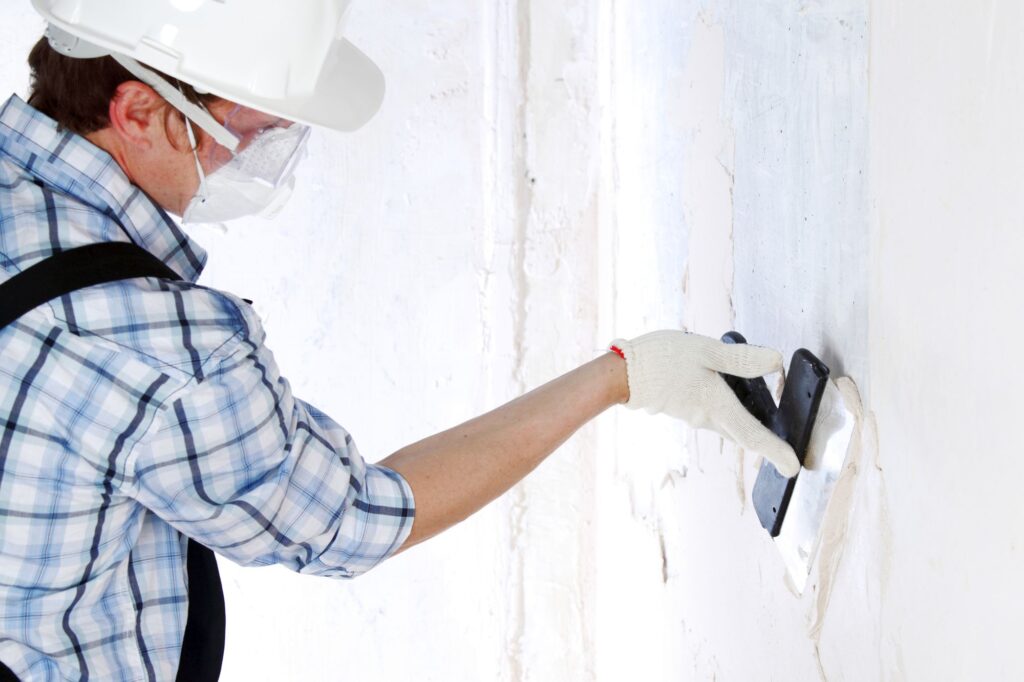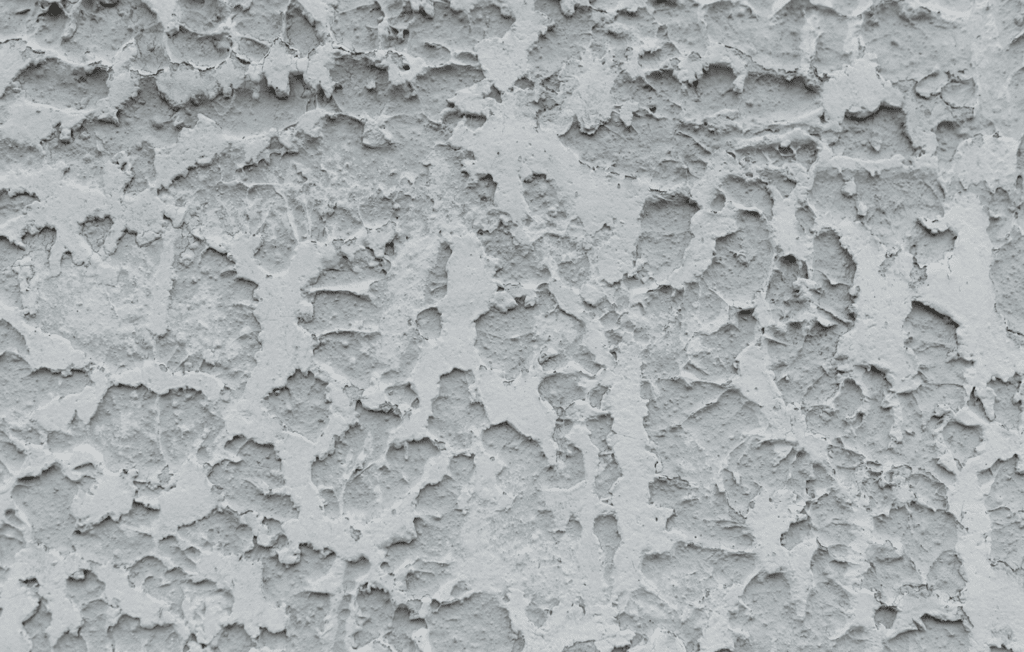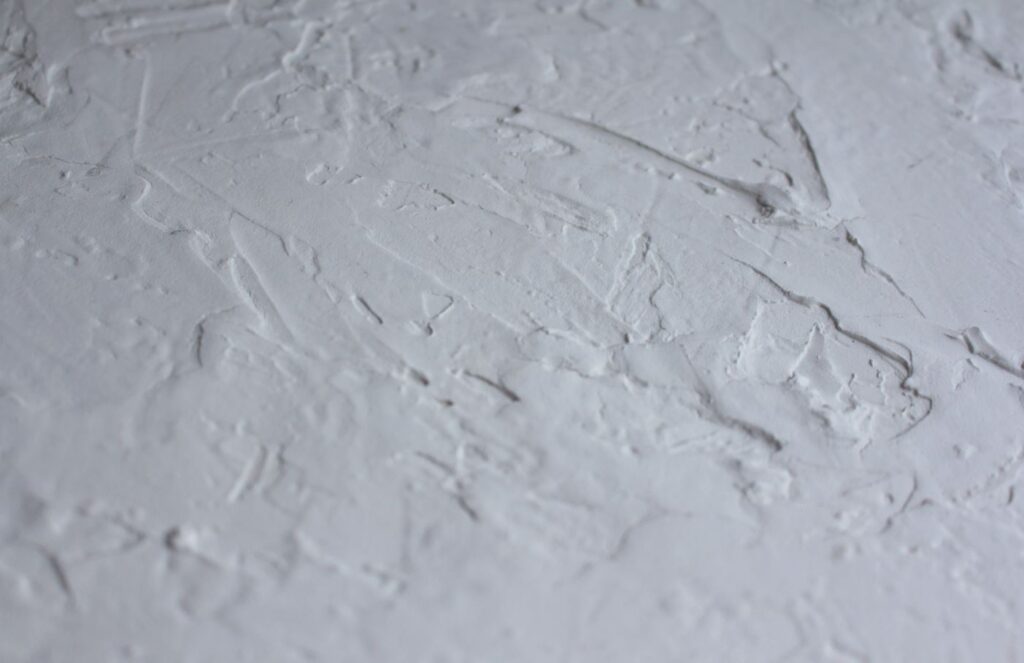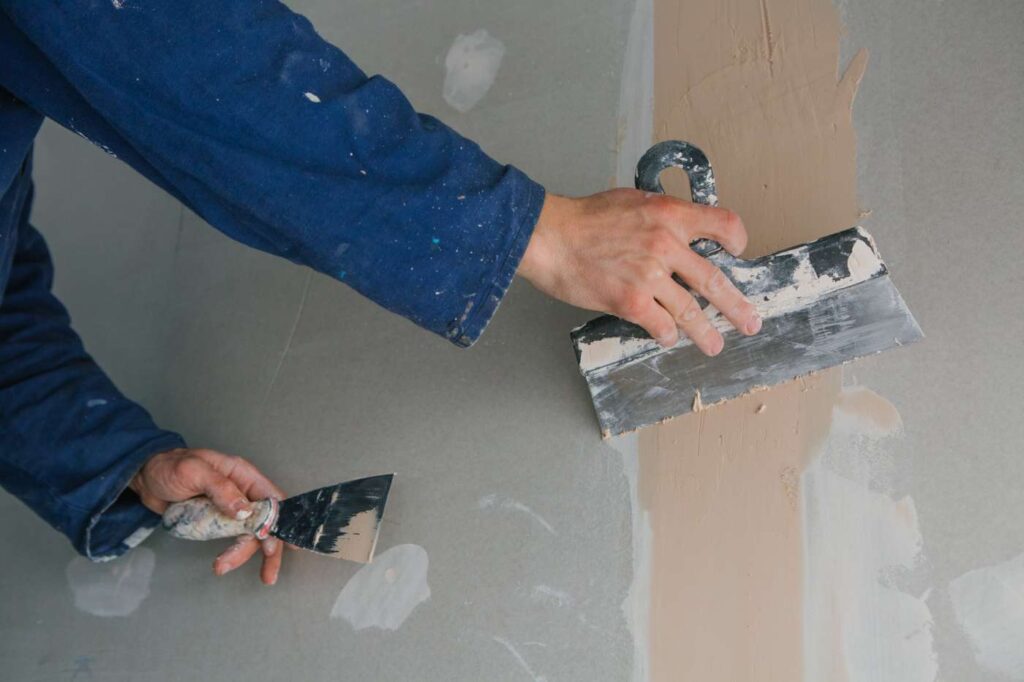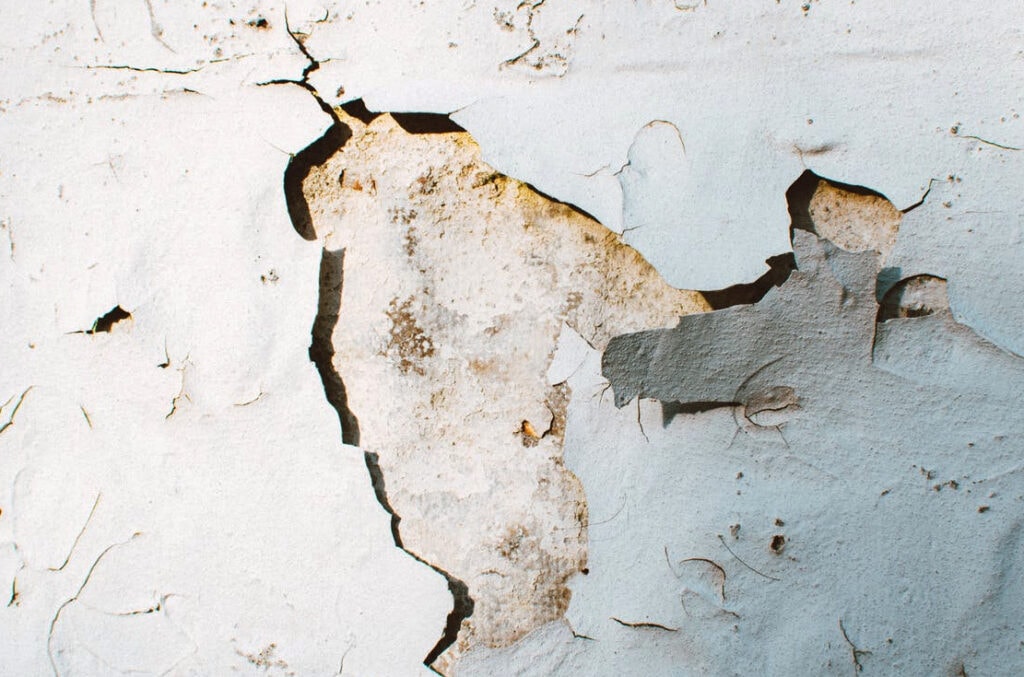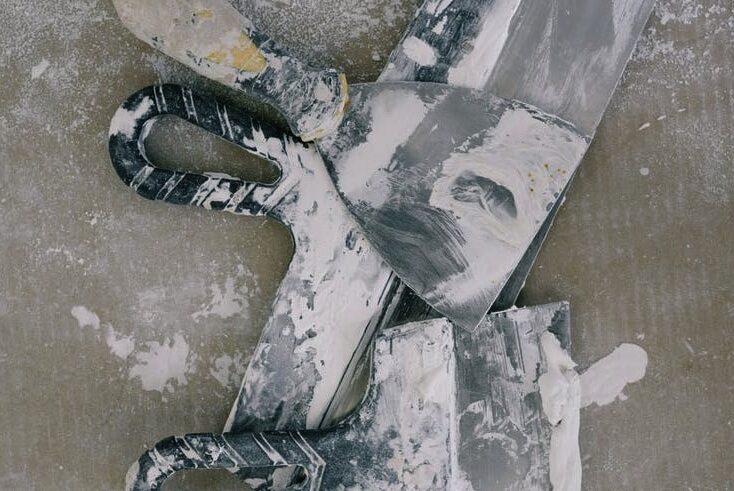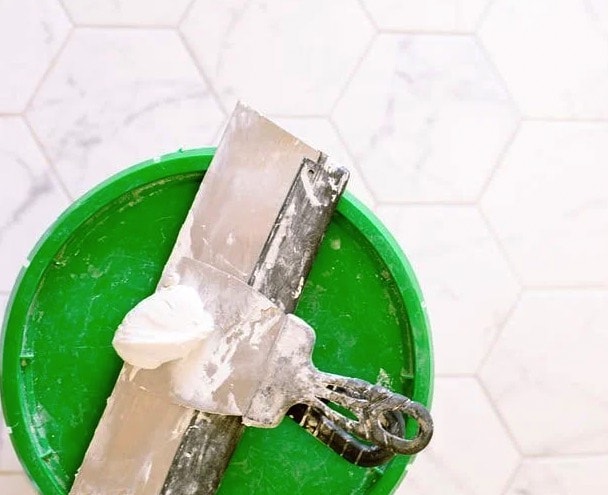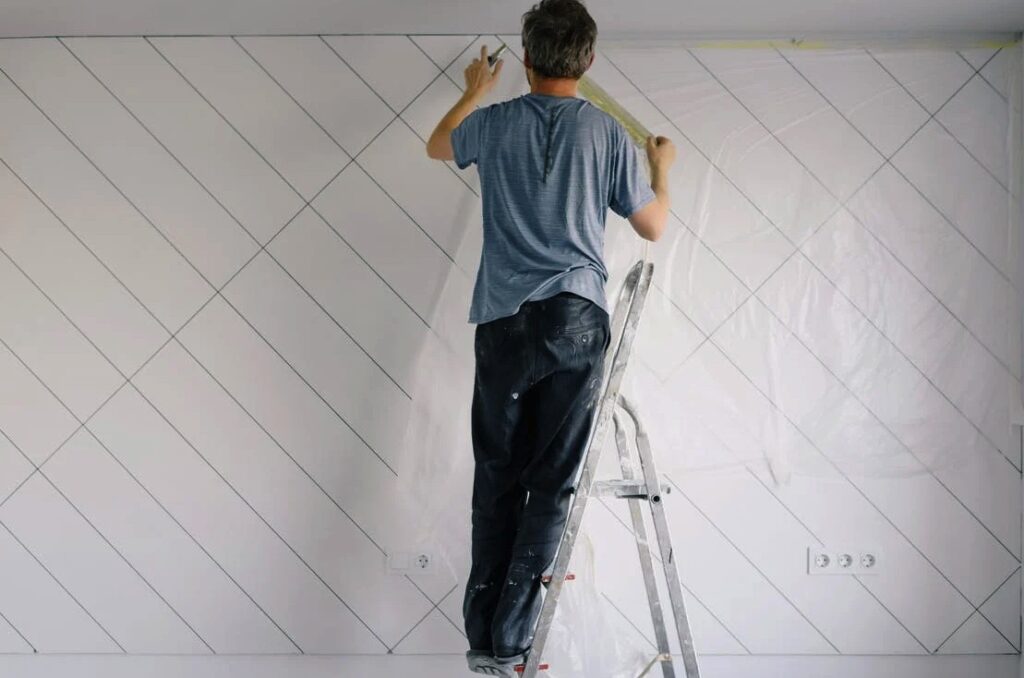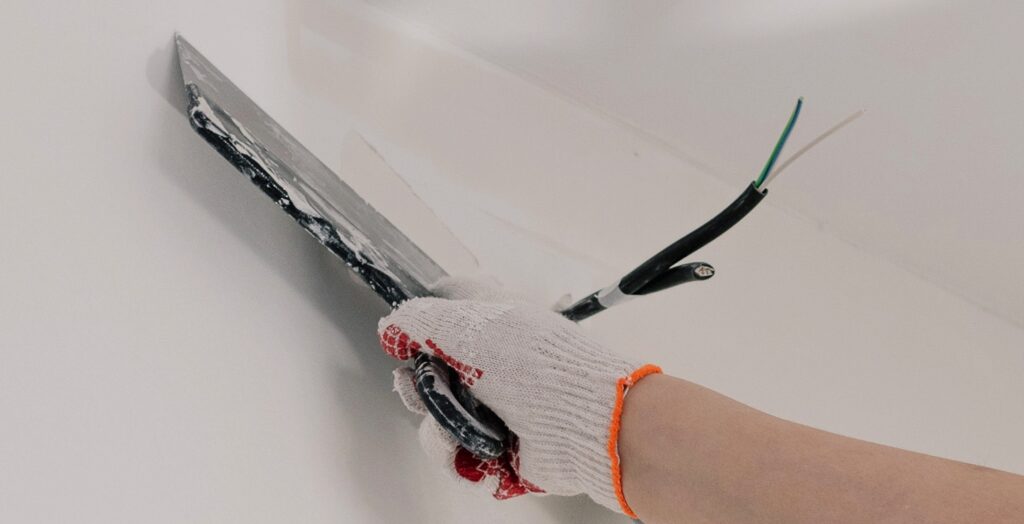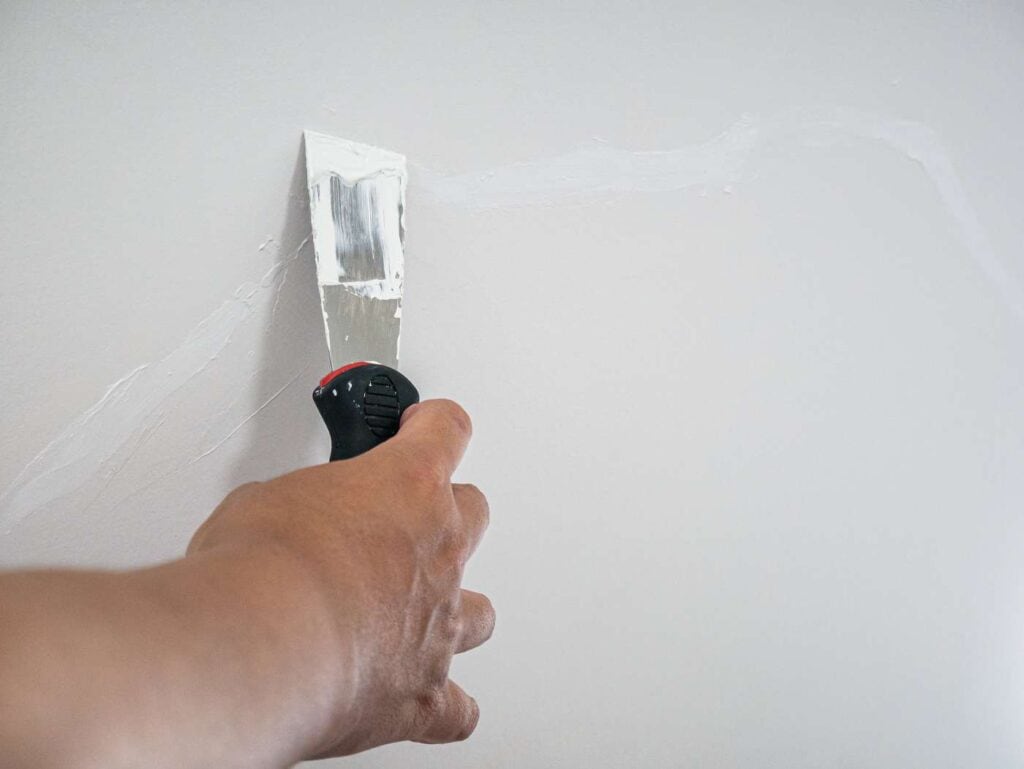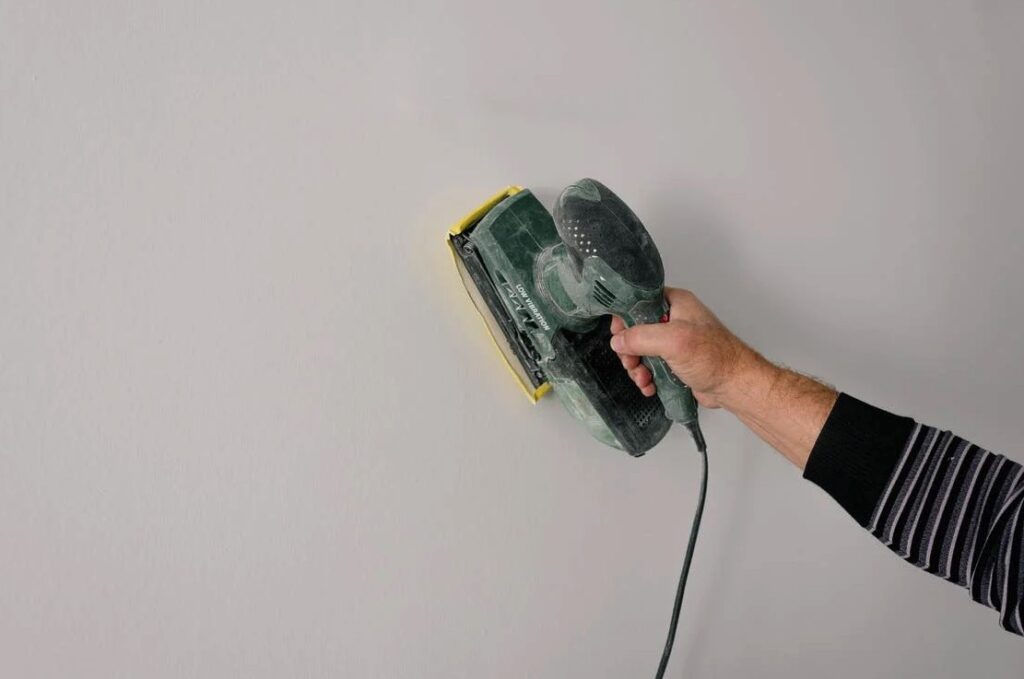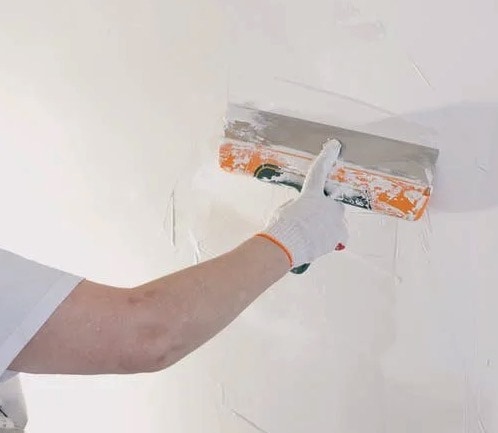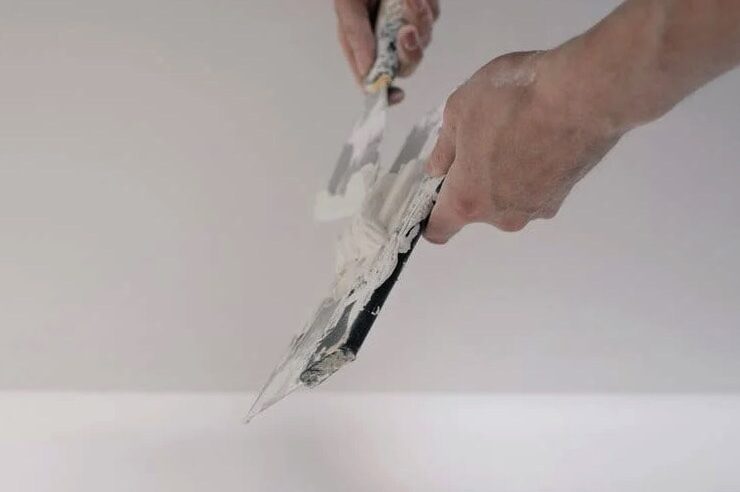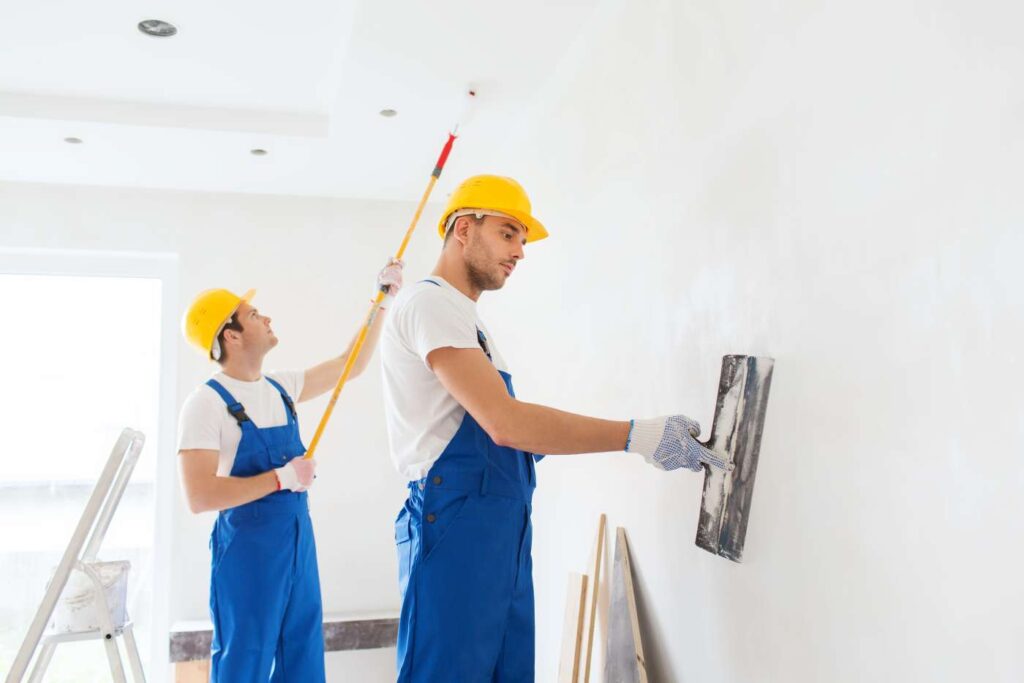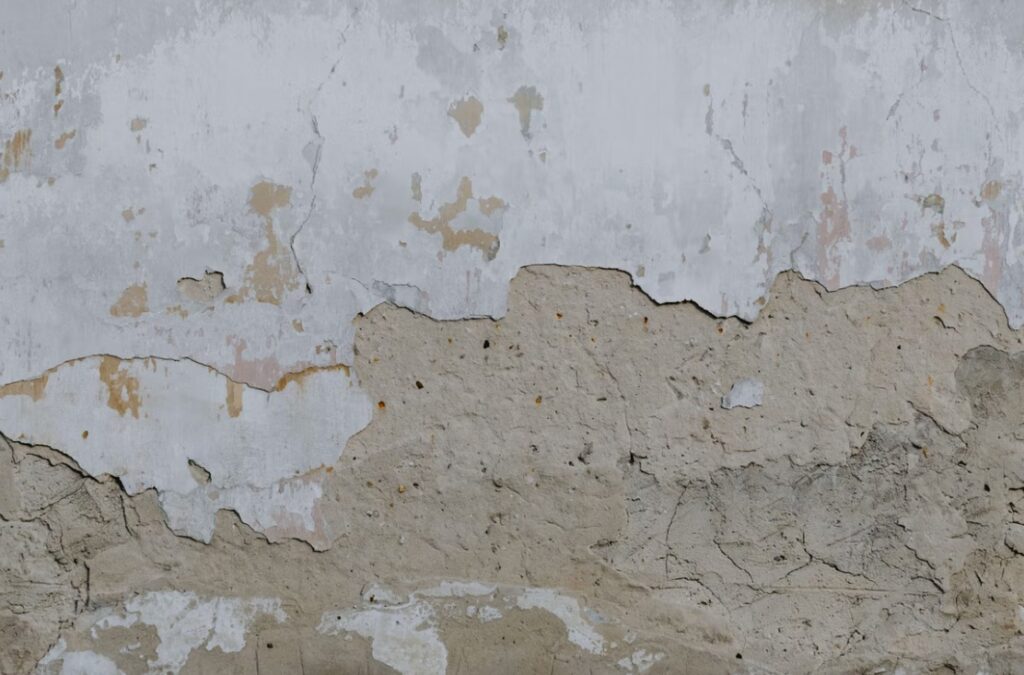As the penultimate step in completing a building project, plastering is an integral aspect of the building process. But flaws in the plastering can still happen, frustrating the homeowner and detracting from the building's curb appeal, no matter how meticulous the planning and execution are. This essay will explore the many plastering faults, their causes, and how to cure or avoid them. Knowing these typical issues will help you avoid them and get a perfect result, whether you're a professional builder or a homeowner. Alright, then, let's get down to the nitty-gritty of plastering flaws.
What Are The Different Types of Plaster?
Lime Plaster
The use of mortar based on lime for covering walls and ceilings is known as lime plastering, and it is a historic construction method. Historic and heritage buildings have relied on lime plaster for centuries due to its long lifespan, resistance to cracking, and attractive appearance. Because of its ability to absorb and release moisture, lime plaster is useful for controlling indoor humidity. Mould and other structural problems can't develop because of this quality, which lets air and moisture through. Lime plaster provides a refined and beautiful finish that enhances any area with classic elegance, whether for a velvety smoothness, an interesting texture, or a work of art.
Gypsum Plaster (Plaster Of Paris)
Gypsum plaster, often called Plaster of Paris, is made by heating gypsum to a low temperature and draining off the water. It is then suitable as a decorative covering on walls and ceilings. Plaster is perfectly suited for painting or decorative finishing due to its smooth surface. Gypsum plaster has many uses and advantages that contemporary interiors need, like making a room look more elegant and long-lasting. Furthermore, gypsum is inherently heat-resistant and is renowned for its outstanding thermal and acoustic insulation qualities. Instead of settling for boring walls, make a statement with gypsum plaster and create works of art that will last for years.
Cement Plaster
The three basic ingredients for cement plaster are water, sand, and cement. Surfaces inside and out can benefit from its long-lasting, robust, and hard finish. It can preserve concrete, brickwork, metal lath, and other surfaces. In addition, cement plaster is great for smoothing off rough surfaces, defective artistry, and other construction flaws. Plastering over bumps and divots prepares a smooth surface for priming and painting.
Venetian Plaster
As a luxurious decorative finish, Venetian plaster (or polished plaster) is second to none. It is a centuries-old method with its roots in Venice and exemplifies classic elegance. Multiple coats of plaster and marble dust are applied to achieve the desired shiny, smooth, and opulent appearance. Venetian plaster is an important part of any building's interior design, whether it's a classic or contemporary style. Because it resembles actual stones, it provides an easy and less expensive substitute for laying a hefty slab of marble or limestone.
Clay Plaster
Combining aggregates, clay, and fibre makes clay plaster a sustainable and unpolluting material choice. Sustainable and environmentally sensitive construction methods frequently employ it. Clay plaster can have its hue and artistic effects customised by adding various pigments.
These are just a handful of plaster varieties utilised in today's construction and architecture. The purpose and desired finish are two considerations when deciding on a plaster, but there are many more options.
Types of Defects Observed in Plastering
Plastering is a crucial part of building construction because it creates a uniform surface for the walls and ceilings. Nevertheless, plastering, like any other form of construction, can have its share of flaws and irregularities. These flaws can manifest from various causes, including careless assembly, inappropriate material choice, and external influences. This post will go over nine different kinds of plastering problems.
Blistering/ Bubbling
A typical flaw in plastered surfaces is the appearance of bubbles or blisters caused by trapped air or water between the substrate and the plaster. Plastering on an inadequately dry or polluted substrate, employing the wrong material, or applying the plaster too quickly can all lead to this problem.
Cracking
Plaster can shrink from insufficient curing, structural movements, vibrations, and other causes, leading to cracks. Inadequate plaster thickness, incorrect plaster mix ratios, or the absence of expansion joints can all lead to cracks.
Hollowing/ Delamination
Plaster detaches from its base, leaving behind hollow areas; this flaw is known as delamination or hollowing. This may happen due to inadequate sand in the mixture, sloppy construction, or poor plaster-to-substrate adhesion.
Belling
A plaster that bulges outward from the surface giving the appearance of a bell, is known as a belling. The use of low-quality components, inefficient mixing methods, or excess water in the mixture are typical culprits here.
Peeling
The flaking or patching of the plaster surface is known as peeling, an imperfection. This may happen due to moisture intrusion, poor bonding, or insufficient curing.
Crazing
The plaster surface might appear damaged due to crazing, a network of fine fissures. The surface contracts before the inner layers do, leading to stress and cracking, and this flaw happens when the plaster dries too rapidly.
Efflorescence
The appearance of a white powdery substance on the surface of plaster, known as efflorescence, is a prevalent flaw in the plastering process. The presence of soluble salts, carried to the surface by the evaporation of moisture, is the cause of this phenomenon.
Shrinkage
One typical flaw is shrinkage, which happens when the plaster dries and contracts more than anticipated. This may occur if the drying time is too short or the mix ratio needs to be corrected.
Discolouration
Plaster discolouration can happen due to several causes, including improper mixing, uneven plaster application, or pollutants on the substrate.
Plastering Work Procedure
The procedure to be followed in plastering is as follows:
Surface Work Preparation
To begin plastering, the surface must first be prepared. To prepare a surface for plastering, it must first be cleansed and rinsed to remove dirt or dust. Using a spackle knife, remove any extra cement crust or lumps. After that, the mortar joints are brushed and cleaned. Plastering is most effective when the surface is kept moist throughout.
Placing Bull Marks & Markings
Small plaster patches measuring 12–15 mm thick, spaced 2 m apart in horizontal and vertical directions, are known as bull markings. These marks are made to make the plaster the same thickness throughout.
Bonding
Plastering slabs, columns, and beams need hacking to enhance the bonding effect. To prevent cracking, the chicken mesh covers the grooves with electric wire.
Applying The Base Coat
Add water in the right amounts to ensure the mortar is mixed evenly. Due to the one-hour setting time of mortar, the plasterer must be careful with the amount of mortar mixed. Depending on the plastered surface, the cement-to-sand ratio might range from 1:3 to 1:6. A trowel is used to apply the base coat. Interior walls should have a base coat thickness of 12–15 mm, while external walls should have a 20–25 mm thickness.
Applying Subsequent Coats
It is common practice to apply more than one coat to exterior walls. To improve the plaster's adhesion, scratches are placed on the base coat. Floats and a plaster sponge are used to polish the skin, which enhances its attractiveness.
Curing
To cure the plaster, it is necessary to water the surface frequently and keep it wet for about seven days. Plaster becomes stronger and less prone to cracking and chipping as it cures.
FAQs About Plastering
Shrinkage occurs as the plaster dries and contracts, leading to cracks or gaps in the material. It can happen due to insufficient water content in the mix, improper curing, or using low-quality materials.
While some defects may be inherent to the plastering process, proper preparation, application techniques, and adherence to manufacturer guidelines can help minimise the risk of defects.
Cracks and crazing can be repaired by filling them with suitable patching compounds or fillers, sanding the surface smooth, and applying a new coat of plaster or paint.
Efflorescence can be prevented by using materials with low salt content, ensuring proper drainage and ventilation, and addressing any underlying moisture issues in the substrate.
If defects are found after plastering is complete, it's essential to identify the root cause and take appropriate corrective measures. This may involve repairing the affected areas, addressing underlying issues, or consulting a professional plasterer for guidance.
How To Check Plastering Work Quality
- For optimal results, check the mortar quality before plastering. Choosing a cement that is 43 or 53 grades and has been manufactured relatively recently is best. It is ideal to use fine sand with less than 6% silt.
- Ensure there are no cracks by checking after seven days that the plastered surface has healed.
- Find any signs of efflorescence: When the plaster dries, the salts in some cement evaporate, creating air bubbles. The term for this phenomenon is efflorescence. To remove these air bubbles, water and brush the plastered area.
- Differences in the mortar-to-water ratio in different mixtures might lead to discolouration. For this reason, keeping the cement's water content constant is critical.
What are the signs of a reliable plasterer?
Ensure the plasterer you hire can accomplish all your specific requests before hiring them for your property. It would help if you looked for impeccably done plastering and built to last.
On the other hand, you probably need help to begin your search for a reliable plasterer. To assist you in making an informed decision, we have compiled our best advice on locating a reliable plasterer for your project.
Never Do It Yourself
First and foremost, you should not attempt to arrange for plastering on your own. Certainly, you can find many do-it-yourself guidelines online that will walk you through finishing plastering and determining which materials to use. But plastering isn't exactly a walk in the park, and you'll need a tonne of experience and expertise to get the job done well. You can end up in a much worse situation if you attempt to handle it independently, forcing you to call reinforcements to get the job done.
Gather Recommendations
The most reliable method for finding a plasterer is getting referrals from someone you know who has used their services before. Whoever this is, they might be close friends, relatives, or even someone you know through social media. You may rest easy knowing you've picked the proper provider and receive excellent service when you have a referral.
How Do You Feel About Them?
If you want to know how a plasterer is and if you can trust them with your property, it's best to meet with them in person. The last thing you want to do is give them access to your home and then be concerned about their actions and the condition they're leaving it in.
Get Some Quotes
Even if the cost should be different from your only criterion when hiring a plasterer (cheap doesn't necessarily indicate good quality), you should still check that you aren't paying too much for the job you need to do. Obtain a price quote for the project and verify that it covers all you need. Worst case scenario: the job is finished, but you have to shell out more cash for things like scaffolding, garbage disposal, and removing the plaster from your walls.
Finding a plasterer to meet your needs is easier than you would think. Therefore, why hesitate any longer? Please find the best plasterer for your needs by following our advice.
Conclusion
Plastering is an important part of building, but mistakes can still happen and make the building look bad from the outside. Blisters, cracks, hollows, bells, peeling, crazing, efflorescence, shrinking, and discoloration are some of the most common flaws. Lime plaster has been used for centuries to cover walls and ceilings because it lasts a long time, doesn't crack, and looks good. Getting gypsum to a low temperature and draining off the water is how you make plaster of Paris, which is another name for gypsum plaster.
Water, sand, and cement are mixed together to make cement plaster. It is a strong, long-lasting finish that keeps concrete, bricks, metal lath, and other surfaces in good shape. A luxurious decorative finish called Venetian plaster comes from a method that dates back hundreds of years to Venice and is a perfect example of classic beauty. Different pigments can be used to make clay plaster unique. This material is long-lasting and good for the earth.
When plastering goes wrong, it can split, crack, hollow out, bell, peel, craze, efflorescence, shrink, and change colour. Some of the things that can lead to these flaws are careless assembly, using the wrong materials, and outside pressures. If people and professionals know about these problems, they can avoid them and make their building projects turn out perfectly.
In order to cement, surfaces must first be cleaned and made ready for the process. Cleaning and rinsing the surface to get rid of dirt and other waste, removing extra cement, and brushing the mortar joints are all parts of this process. Bull markings are small pieces of plaster that are used to keep the thickness of the plaster. Blocks, columns, and beams need to be bonded together, and chicken mesh is used to keep them from breaking. For even mixing, water is used to apply the base coat, and the outside walls get more than one coat.
Pick cement with 43 or 53 grades and fine sand with less than 6% silt to see how well the plastering is done. In seven days, look for cracks and efflorescence, which are air bubbles that form as the plaster dries. It is very important to keep the water level constant.
Content Summary
- Plastering is essential in building construction for creating uniform wall and ceiling surfaces.
- Despite careful planning, various defects can arise in plastering, affecting the building's aesthetics and durability.
- Understanding common plastering defects helps in preventing them and achieving a flawless finish.
- Lime plaster is a historic material known for its long lifespan, resistance to cracking, and moisture control properties.
- Gypsum plaster, or Plaster of Paris, offers a smooth surface suitable for painting and decorative finishes.
- Cement plaster provides a durable and robust finish for both interior and exterior surfaces.
- Venetian plaster is a decorative finish that simulates the appearance of marble or limestone.
- Clay plaster is a sustainable choice, allowing for custom colors and textures.
- Various types of plaster are used in construction, each with specific benefits and applications.
- Plastering defects can result from improper application, material choice, or external factors.
- Blistering or bubbling in plaster is caused by trapped air or water between the substrate and the plaster layer.
- Cracks in plaster may result from structural movements, vibrations, or inadequate curing.
- Delamination, or hollowing, occurs when plaster detaches from its base, creating hollow areas.
- Belling refers to plaster bulging outward, often due to poor quality materials or excessive water in the mix.
- Peeling of plaster can occur due to moisture intrusion, poor bonding, or insufficient curing.
- Crazing, a network of fine fissures, happens when the plaster surface dries too rapidly.
- Efflorescence is the appearance of a white powdery substance on plaster, caused by soluble salts.
- Shrinkage in plaster occurs when it dries and contracts more than expected, often due to improper mix ratios.
- Discoloration of plaster can be caused by uneven application, pollutants, or improper mixing.
- Proper surface preparation is crucial for effective plastering, involving cleaning and moistening the surface.
- Bull marks are used to ensure consistent plaster thickness across the surface.
- Enhancing plaster bonding involves hacking slabs, columns, and beams and using chicken mesh.
- The base coat of plaster should be applied with care to achieve the desired thickness and smoothness.
- Multiple coats may be applied to exterior walls to enhance durability and appearance.
- Curing the plaster properly involves keeping the surface moist for about seven days.
- Checking the mortar quality before plastering is essential for achieving optimal results.
- Efflorescence should be checked and addressed by watering and brushing the plastered area.
- Maintaining a constant mortar-to-water ratio is critical to prevent discolouration.
- Hiring a skilled and reliable plasterer is crucial for achieving high-quality plastering work.
- DIY plastering is not recommended due to the expertise and experience required.
- Gathering recommendations from friends or family can help find a trustworthy plasterer.
- Meeting with a plasterer in person can provide insight into their professionalism and trustworthiness.
- Obtaining multiple quotes ensures that you are paying a fair price for the plastering work.
- The right plasterer will have a track record of delivering high-quality work that lasts.
- Avoiding common plastering defects requires knowledge of materials, proper application techniques, and attention to detail.
- Each type of plaster has unique properties and applications, influencing the choice of material for a project.
- Identifying and addressing plastering defects early can prevent more significant issues later on.
- Professional plasterers are equipped to handle the complexities of plastering work, ensuring a durable and attractive finish.
- The success of a plastering project depends on careful selection of materials, skilled application, and proper curing.
- Awareness of common plastering defects and their causes can help homeowners and builders achieve better outcomes.
- The aesthetic appeal and structural integrity of a building can be significantly impacted by the quality of plastering work.
- Efflorescence, while common, can detract from the appearance of plastered surfaces and should be addressed promptly.
- The choice between different types of plaster depends on the specific requirements of the building project.
- Proper preparation of the plastering surface is essential for a successful application and long-lasting results.
- The application of subsequent coats of plaster can enhance the surface's durability and finish.
- Curing plays a critical role in the strength and stability of the plaster, making it resistant to cracking and chipping.
- Quality checks before, during, and after plastering ensure that the finished work meets high standards.
- The expertise of a reliable plasterer is invaluable in navigating the challenges of plastering work.
- Effective communication and clear expectations between the homeowner and plasterer contribute to the project's success.
- By adhering to best practices in plastering, it is possible to avoid common defects and achieve a flawless finish.
